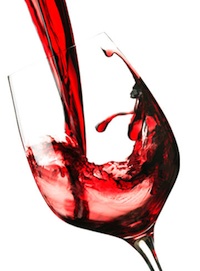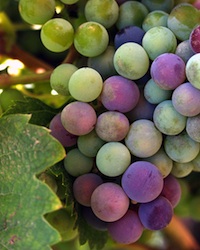Special Feature: Products Sally Recommends
learning about wine
 What exactly is wine? Have you ever wondered? Essentially, whether it is California wine or comes from the vineyards of France and Spain, wine is fermented grape juice with a few zingers added. When learning about wine you must understand the fermentation process, which uses yeast to convert any fruit containing sugar into booze. Yeast is ubiquitous and it often lands on the skins of unsuspecting grapes and other fruits, fermenting them naturally. Winegrowers do not rely on nature’s whims, and they spend a lot of time deciding which type of yeast to use in order to produce a desired result.
What exactly is wine? Have you ever wondered? Essentially, whether it is California wine or comes from the vineyards of France and Spain, wine is fermented grape juice with a few zingers added. When learning about wine you must understand the fermentation process, which uses yeast to convert any fruit containing sugar into booze. Yeast is ubiquitous and it often lands on the skins of unsuspecting grapes and other fruits, fermenting them naturally. Winegrowers do not rely on nature’s whims, and they spend a lot of time deciding which type of yeast to use in order to produce a desired result.
It is true that green grapes make white wine and red grapes make red wine, but learning about wine means realizing that white wine can also be made from red grapes. It is only the skin of red grapes that is actually red; the insides are always white, and most wines are made from the insides of a grape. When the fleshy interior of the grape is mixed with the pulpy skins and infused with “tannin” when crushed, the red color and distinctive flavor in wine is created.
What are some different types of wine?
 You will have to get a mini education when learning about wine, as there are so many different types that are on the market today. Here are a few hopefully helpful generalizations.
You will have to get a mini education when learning about wine, as there are so many different types that are on the market today. Here are a few hopefully helpful generalizations.
1- Regional wines
Some European countries have a long history based on centuries of experience of wine production, and their standards and strict regulations require certain varieties of grapes and viniculture practices to be applied to wines before they can be marketed. Each region has its own tried and true methods of production. Most of the better French, Italian and Portuguese wines fall into this category. Some examples of regional wines include: Bordeaux, Chablis, Chianti, Burgundy, Beaujolais, and Champagne.
2- Varietal wines
Unlike regional wines, these wines are named after the grape variety from which they were produced. Even though variations do exist, almost every wine- producing country permits labeling wines in this fashion. When learning about wine, understand that in California a wine containing 75% of a particular grape is required for a wine to bear that name on its label. This is not the case in France where 100% is required. Some examples of varietal wines include: Chardonnay, Riesling, Cabernet Sauvignon, Merlot, Pinos Gris and Sangiovese.
3- Generic wines
More common in the United States, this particular variety of wine is almost non-existent in European countries. They are so named because no content or origin requirements were ever imposed on their production. For example, if an American winery produced a sparkling wine, it could be labeled as Champagne, even though true Champagne can only be produced in the Champagne region of France. Some generic names are: Chablis, Burgundy, Champagne, Sherry and Port. It is easy to confuse consumers in any country that permits generic naming (United States included). These knockoffs, so to speak, can’t come close to the true quality of the regions whose names are used to market these inexpensive and inferior wines.
The process of learning about wine is complicated and time-consuming as there is much to know. Fine wines purchased from online catalogs are produced by quality vineyards and are meant to be savored and appreciated over time.
Appreciating and learning about wine is a labor of love that will never lead to sour grapes!
Note: This information was accurate when it was published. Please be sure to confirm all rates and details directly with the businesses in question before making your plans.
Earn a chance to win a free cookbook every week: Get Sally's eNewsletter!



